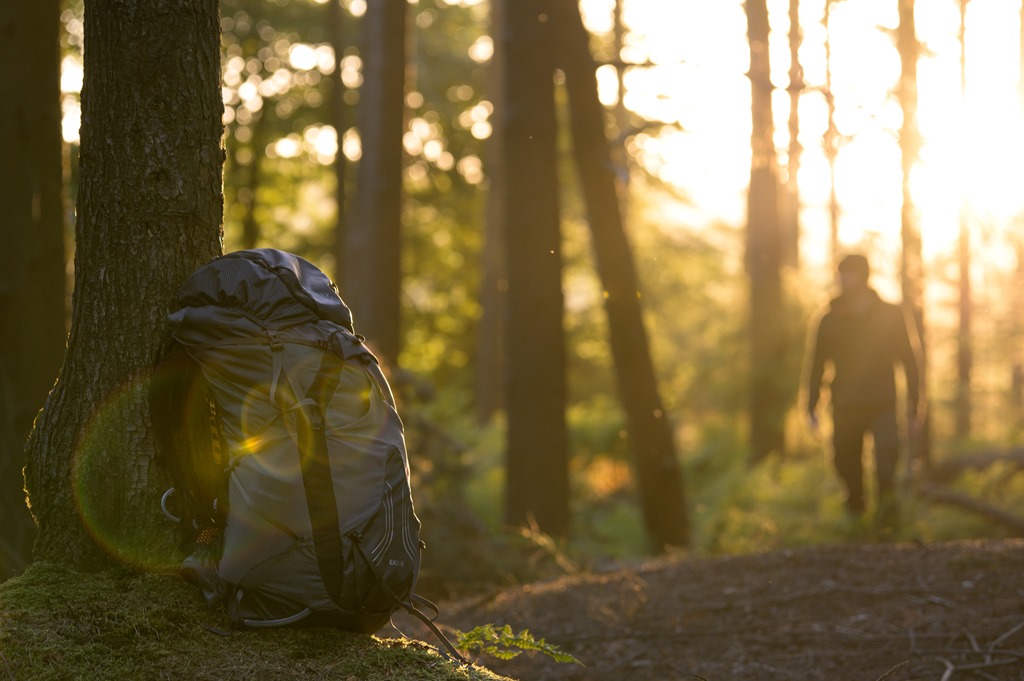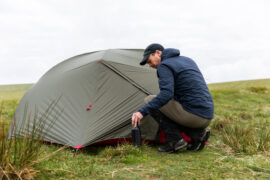Follow Luke from our Bristol store as he takes a good look at Osprey’s lightweight, technical trekking pack.
…
The new Osprey Exos 48 is a mid-size ultralight backpack, re-designed for the ultimate combination of effective load support, increased durability, and lightweight functionality. To put it through its paces, I’ve been testing it out for the last month by heading out on several fast-paced hikes and wild camps – something which I feel this bag is absolutely perfect for.
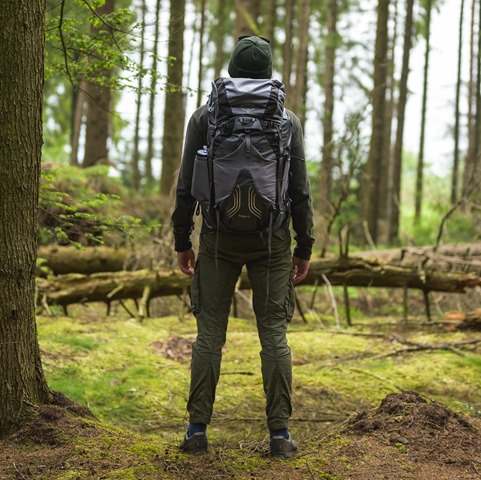
My Experience
I’m often carrying a relatively heavy camera kit whilst out on excursions, so every gram I can save in a backpack is very welcome. The Exos 48 excels in this regard, weighing in at only 1.3kg it’s perfect for active adventuring where mobility and weight are paramount. Despite the generous back ventilation, which did a fantastic job maintaining airflow, the Exos carries loads well and didn’t make me feel like I needed to lean forward to counterbalance the pushed-out weight.
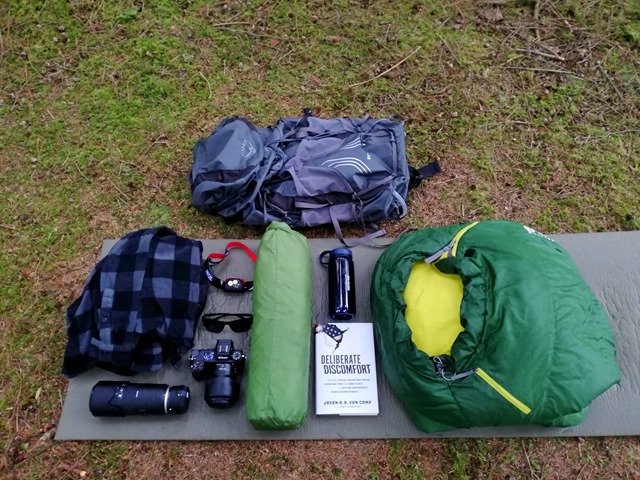
With the nature of what I do, it’s very comforting to know that the main bag body is constructed out of a recycled 100D high tenacity ripstop nylon, so I don’t have to worry too much about charging through the undergrowth and tearing it apart. In fact, the entire bag is made out of recycled materials which is great news for anyone trying to shop more ethically, without compromising on quality.
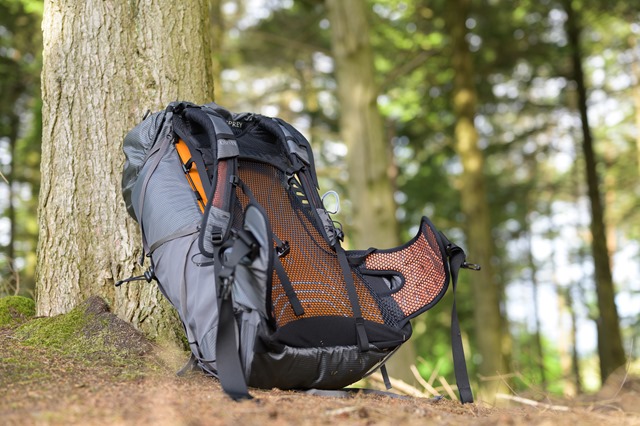
When out camping I use a very compact 1 man tunnel tent, with no gear porch. So I have to sleep with my kit inside my tent, which considering I often have valuables in my bag, is no big issue. On previous trips when lugging around my 70 litre osprey, my space inside the tent would be severely compromised by the sheer bulk of the bag and its stiff, heavily padded waist straps. With the Exos 48 there was no such issue. The lightweight nylon compresses well and the super flexible hip straps can easily be compacted flat against the bag, meaning it really didn’t intrude too much on my space at all.
Packing the bag is very straightforward. The only access point into the main body of the bag is from the top and it took all my kit with ease, with a little extra space left over in the outside pockets and lid. Having one access point wasn’t a problem for me when wild camping with this bag. With the tent, sleeping bag, and stove at the bottom, I could occupy the upper with things I needed more immediate access to, such as my camera and extra layers, and snack bars sitting in the hip belt pockets with my keys.
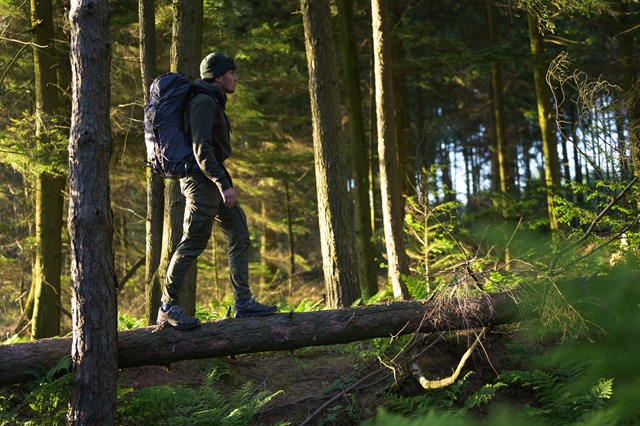
When it came to walking and hiking with the bag, it proved to be very comfortable and supportive. For the most part I’ve been carrying between 6 and 9 kilos, and have found it to remain effortless to walk with for multiple hours. Thats one of the reasons I love this 48-litre bag size, in that for multi-day wild camps it forces you to pack a little lighter and take only what you really need. If you find yourself not using the pockets in the detachable lid, then you can remove it and use the FlapJacket underneath, which clips in the same way but saves on even more weight and reduces the height a tad. There’s also loop attachments on the outer for securing walking poles and ice axes, and of course the ability to hold a water reservoir on the inside.
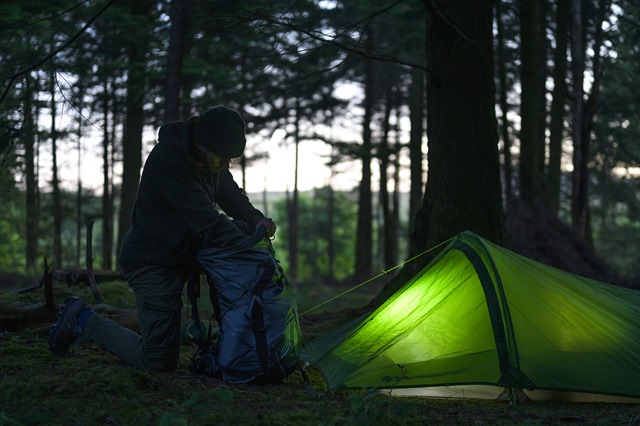
My only concern with this bag is the durability or the of the hip and chest buckles, which have some very thin plastic in the flexible areas. Only time will tell, and luckily replacement buckles are very easy and cheap to source. Another thing to note is that the Exos 48 does not come with a rain cover. The outer has a DWR treatment, but if there’s any chance of heavy rain, you’ll want to be using dry bags or an appropriate waterproof cover.
Concerns aside, the Exos 48 has now become my go-to bag for any multi-day adventures, and thanks to its comfort and incredibly low weight, I think it will be for some time.
The Exos is available in 38, 48, and 58L versions.

